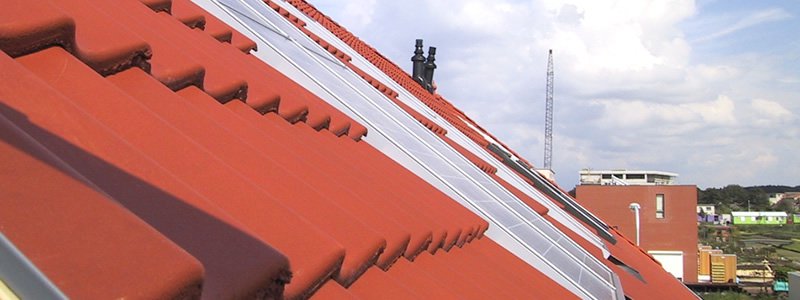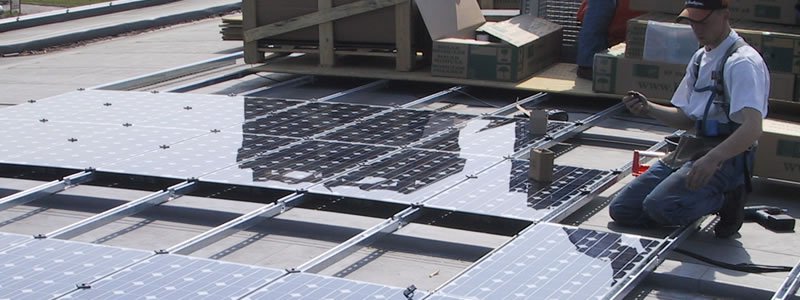
In the run-up to the 9th edition of The Solar Future NL, three market experts share their opinion. Peter Desmet is CEO of distributor SolarClarity, Peter Segaar is an independent market researcher and Olof van der Gaag, formerly of foundation ‘Natuur & Milieu’ (Nature & Environment), has been leading the Dutch Renewable Energy Association since March 2016.
Growth market
According to the data of market researcher Peter Segaar, over 2GW of solar PV capacity had been installed in the Netherlands by the end of 2016. This amounts to a 35% growth in capacity compared to 2015, when the cumulative capacity hit 1.5GW. Small private consumers, like households, medium & small businesses and schools account for half of this figure. Segaar estimates that by now between 400.000 en 450.000 households have solar systems installed on their roofs.
‘By the end of 2017, our cumulative capacity should end up around 2.6GW,’
‘In 2017, the market will continue to grow at a steady pace,’ Segaar predicts. ‘The residential market is and will remain to be a stable foundation of the continued market growth. But this year we can also expect a lot to happen in the commercial segment. By the end of 2017, our cumulative capacity should end up around 2.6GW,’ his forecasts subscribe.
With that, the prediction of the National Energy Exploration - a cumulative capacity of 4-5GW by 2020 - seems more and more likely to be feasible. Segaar: ‘Growth segments are the social housing sector, schools, sporting clubs (the recent EDS-incentive has been oversubscribed) and agricultural enterprises. ‘Postcoderoos’ (zipcode net-metering) projects are also growing in popularity: by my estimations there are over a hundred of those. Solar leasing, however, continues to be a difficult proposition for the Dutch market.
All three experts agree that the most important condition for growth will be the continuation of net-metering for small consumers. Last year the government hired PWC to thoroughly analyse the net-metering scheme. Based on their assessment the minister of finance, Henk Kamp, announced to present several future scenarios by spring this year. These relate to what will happen to the net-metering scheme from 2020.
‘Minister Kamp recognizes that net-metering contributes to the support of an energy transition.’
‘Incentivation of solar energy will have to be maintained until 2030, in some form or shape. The current pay-back-time of seven years continue to make solar panels attractive for consumers,’ argues Olof van der Gaag, director of the Dutch Renewable Energy Association and one of many stakeholders in this issue. ‘Kamp recognizes that net-metering contributes to the support of an energy transition. That is a good sign. The scheme is so successful, that politically he cannot ignore it.’
Peter Desmet shares his opinion. ‘Net-metering is crucial for the sustainable transition of the Netherlands and makes solar energy appealing to your average . Politically, this is an urgent issue, definitely. More and more parties are relying on it. Like the building and housing sector, with their “zero-on-the-meter concept”.’

Gold fever
Another thing the experts agree on: developing large scale solar plants in the Netherlands is becoming increasingly attractive, both on commercial rooftops or open fields. The driver of that growth is the national SDE+ subsidy program. In 2016, during the first round of SDE+ subsidies, 179MW worth of capacity was granted financing. The attributed capacity of the second round has not been announced yet.
Segaar: ‘All in all, I’ve got data regarding 332MW worth of ground-mounted PV projects with SDE subsidy under development, part of which will be constructed in 2017. That adds up! I also still expect a number of projects from the 2014 SDE+ program to be delivered, but how much capacity that will contribute I don’t know for sure.’
His calculations: of the contracted 883MW from record year 2014, only a third has actually been connected to the grid.
pic2.jpg
‘Well-intentioned gold fever,’ Desmet argues. ‘Too many companies smell opportunity, but don’t really understand how difficult it can be to arrange financing. A megawatt project is a project involving millions and you don’t just pull that together with good intentions alone. There’s too much air taking up space in the project market. A solution for that might be to already demand a certain financial contribution from subsidy applicants beforehand. That would work out on both sides of the coin: people are forced to really consider the full picture before applying for an SDE+ subsidy; ánd when such a subsidy is then granted, it’s means a lot more to everyone involved.
One of the consequences of the growing project market is that experienced project developers, often from abroad, are flocking to the Dutch market. Segaar: ‘I’ve got mixed feelings about that matter, as in the end it’s Dutch subsidy-money they’re making a claim on.’
Van der Gaag doesn’t see any issues. He refers to the offshore wind industry. ‘In that industry Danish company Dong Energy was also the first one to win a government tender. We can learn from the golden formula government subsidies, entrepreneur-friendly procedures and cost reductions. For example: Tennet (Dutch grid-operator) is obligated to arrange connection to the grid. I support the lowering of thresholds for this market. So why don’t municipalities and provinces just tender off their roofs for solar energy, including all permits?’

Battery breakthrough?
In the US, and increasingly in Germany as well, consumers are offered a complete package of both solar panels and storage. Will 2017 be the year of the breakthrough of battery storage? Opinions differ…
Segaar: ‘Storage is still limited to the pioneers. In Germany, where there’s more experience with it, the conclusion so far has been: bigger collective batteries per block or neighborhood are much more effective and efficient. I, myself, only use 1.200 kWh and cover this with solar power. Why would I purchase an expensive battery?
‘Research shows that only a quarter of produced solar energy is used for own consumption.’
Van der Gaag does see the ‘technical potential’ of home-storage. ‘Look, the self-consumption of households should increase. Right now, research shows that only a quarter of produced solar energy is used for own consumption. Adding an electric car to the mix is a solution, but not one that everyone can afford. But as long as net-metering is in place, storage won’t take off that fast.
Desmet mostly sees opportunities in the commercial segment. ‘With enough collective battery capacity you create a factor on the so-called primary reserve-capacity (capacity that needs to directly be available to maintain balance on the grid). Companies that deliver battery capacity, will be able to buy and sell their energy more flexibly and cheaply.
